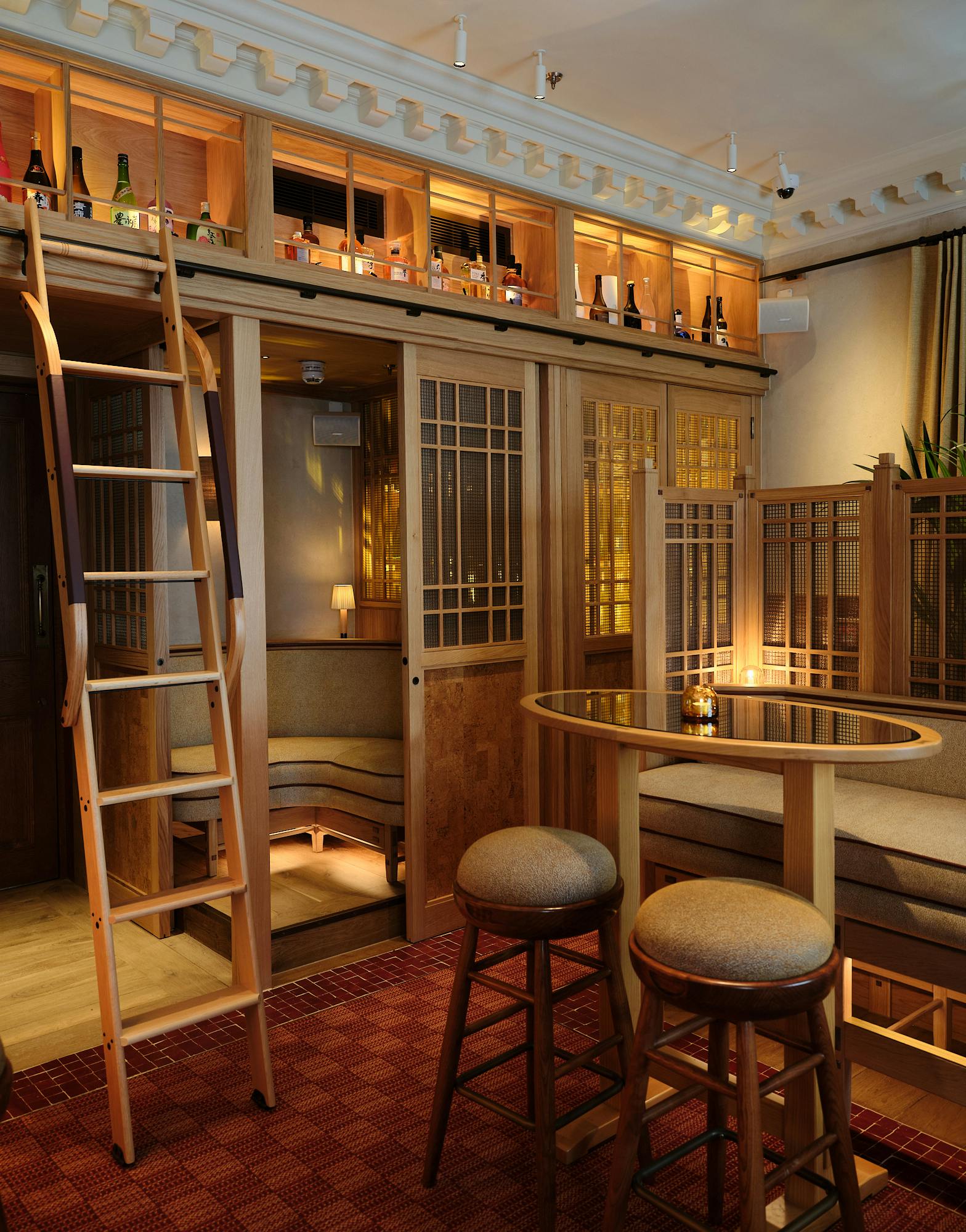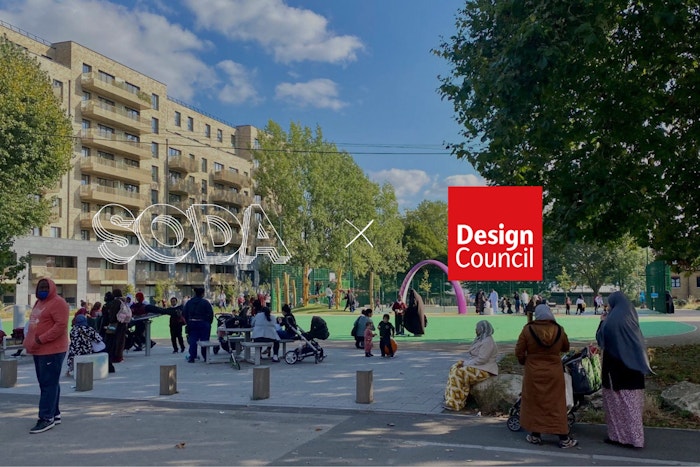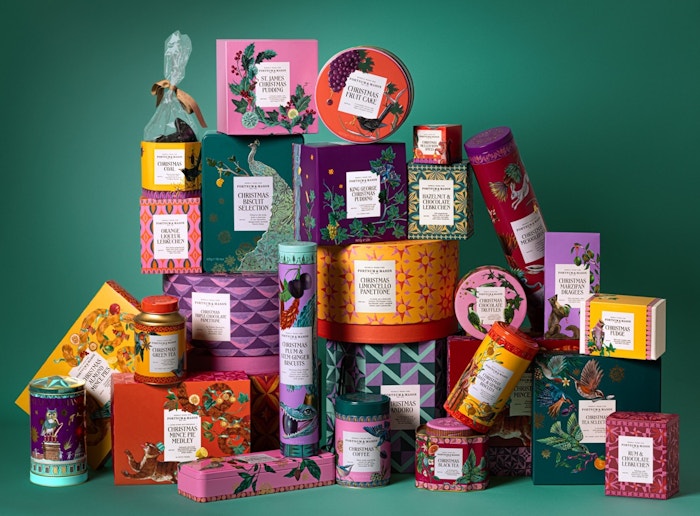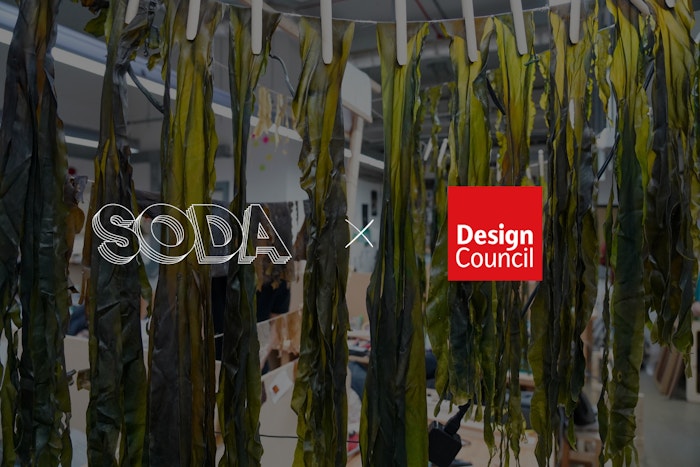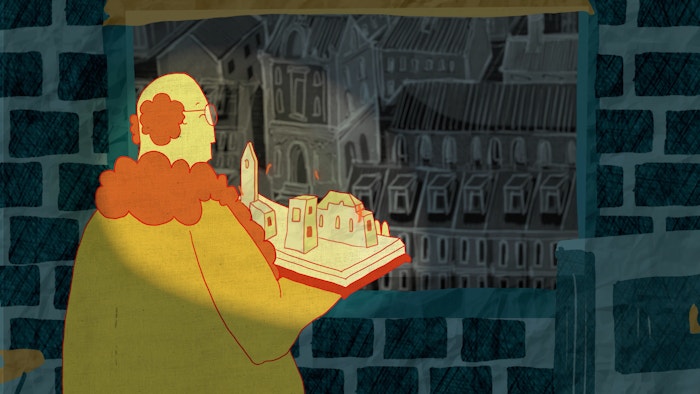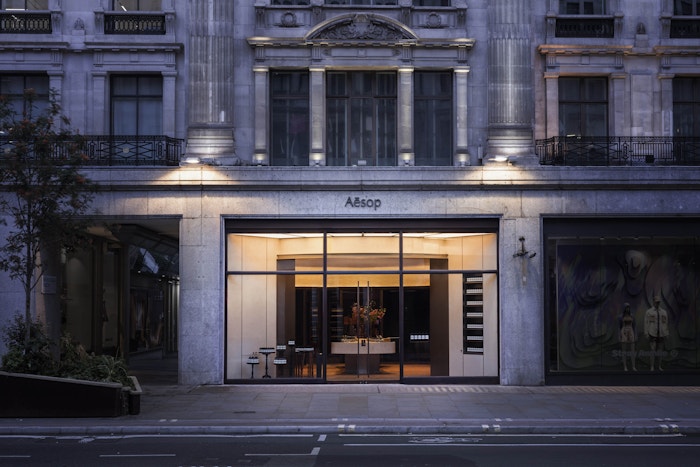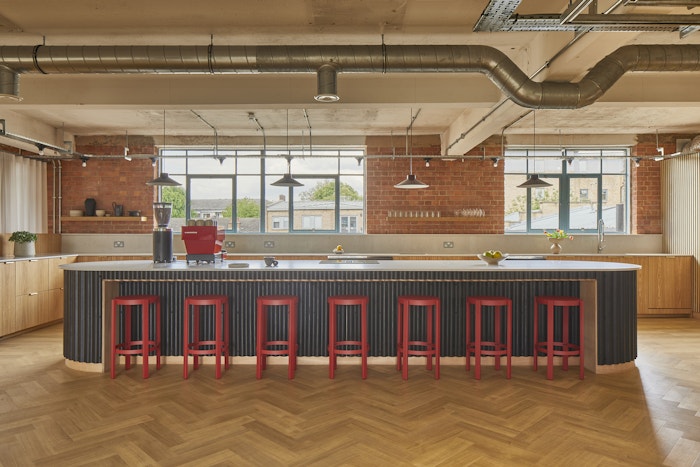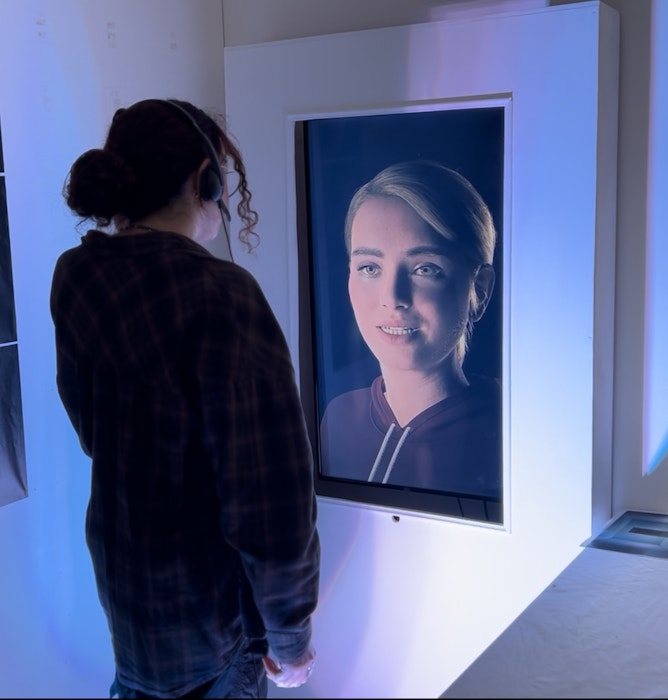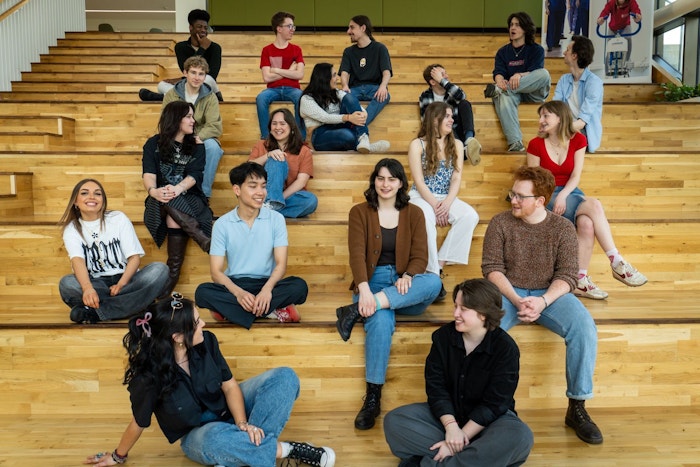
20 Oct 2017
SODA x SODA
SODA is a young practice that has deliberately bucked the trends of most architectural studios. Founded by husband and wife team Russell Potter and Laura Sanjuan, the studio grew quickly off the back of some large and very complex projects in Soho. The geography and attitude of this area came to define the ethos of the practice as it was both home to their studios and place of work. But what happens when you move the team to Clerkenwell, the beating heart of the architectural industry? How does that affect your identity and your future development? Rob Fiehn went to their new space to find out for a SODA on SODA interview.
How did it all start?
LS: The idea sprang from that recession in 2007/8 when many architects lost their jobs. We were in Spain exploring, soul searching, working freelance and having a good time and decided that what we were learning in practice could be improved. We decided that we would set up on our own, working from the kitchen table – although we didn’t get round to it immediately.
RP: The date was 10.10.10, an easy date to remember. There was always an ambition for us to set up a practice together and so I would join early client meetings, in an attempt to make us look like more of an outfit.

Laura Sanjuan & Russell Potter
So were you always called SODA?
RP: We decided that on a beach too. We wanted something accessible that wasn’t our names. We always did these 50s-style collages and wanted to reference that pop culture. We wanted something that had design AND architecture in the title as we knew we didn’t wanted to be restricted to just one thing. We came up with the acronym that meant Studio Of Design and Architecture (the practice has since dropped this but kept the name)
LS: I had time to set up the practice properly and develop some residential projects and client base, so when Russell joined we were ready to go.
RP: We knew Soho Estates from a previous job and they asked us to work on 76 Dean Street (images below) for Soho House. They then suggested we have a crack at the competition to design a new theatre at Walkers Court but in the end they couldn’t decide between us and another young practice and we were asked to collaborate together.
LS: Asking two practices to work closely together could potentially be a disaster, but it worked well on a couple of jobs (including another high-profile Soho site, the ex-Foyles redevelopment on Charing Cross Road), but eventually we went our separate ways and we continued to work develop and deliver Walker’s Court and they carried on with Ilona Rose House.


(above left to right) The Frith St conservation area & 76 Dean St (for Soho House)
Was it then that you developed this expertise and passion for Soho?
RP: They call Soho a village and when you are on a job like 76 Dean Street (which was burnt to the ground in 2009) we were literally rummaging around the ashes and were on site everyday. You tend to meet people by chance or get introduced and that’s how we met the guys from Polpo, amongst other clients. Soho has a really special atmosphere and it’s fantastic to walk down the street and see familiar faces.
LS: People really know who we are there and it has become part of our identity, so the move to Clerkenwell was a really big deal for us.
RP: We had to stay as close to the area as possible. Soho is a huge melting pot where pretty much anything goes. Where else in London can a street be pedestrianised by the power of people alone? On Old Compton Street even the taxi drivers have to respect the fact that when the sun is out the roads will be colonised by the local population.
LS: It’s a constantly evolving space and change has always been the defining characteristic of the area. 76 Dean Street used to be a tannery and now it’s a members club (the practice designed the property for Soho House). We completely understand why everyone is so emotionally attached to Soho and we are as well. Part of what we’re doing is helping the area to evolve and making the best of the existing building stock. Our clients don’t just want to gentrify the area, they want to preserve the soul of Soho.
RP: The first thing we’ll always do when approaching an existing building is to check and see if it can be kept. There are good old buildings and bad old buildings; not everything old should be retained even though the standard response from the public is often against change of any nature
'We’re lucky to have such a broad range of different clients'
Did Soho help you develop your reputation as experts in restoration?
LS: We enjoy the challenge but that’s not how we want to be identified. The process of careful restoration can be really hard but the projects are fascinating. At 76 Dean Street you’re talking about millimetres of a cornice detail being discussed whereas projects like Walker’s Court or our Soho Rooftops scheme provide a completely different challenge.
RP: We like to marry the old and the new. You should be able to read the contemporary against a backdrop of existing buildings and structures. Soho will put your designs through the mill more perhaps than other parts of London. That’s definitely something we take with us.
How did your company rebrand alter your perspective on the business?
LS: I came back from maternity leave and it was clear the company brand wasn’t reflecting who we were. We decided to recruit to work on the rebrand in-house rather than hiring an agency. We felt a real connection with Katie, who we hired, and gave her a very open brief; we didn’t really know what we were looking for or how to define who we are. Our final brand and logo is tied to the fact that we moved office (from Soho to Clerkenwell) and it became a part of the story.
'We like to marry the old with the new'
RP: We wanted an identity that reflected the physical journey from our spiritual home to the new studios. It was an important transition and so the line that cuts across our name is the exact 51.5° angle from one studio to the next. We also had a nagging gripe that in some of our projects the branding was often an afterthought or slapped on buildings near completion when it could have integrated to the design process from the beginning. Katie started working with our clients from a much earlier stage than most graphic designers get involved, providing her with the opportunity to pursue a deeper understanding of projects and where they come from. It is now a really important aspect to how the studio works together and something that clients love.

The SODA rebrand portfolio
Tell me about some of your recent projects.
RP: We’re working on a new hotel for Soho House and Soho Estates which will finish on site later this year: 34 bedrooms and a brand new club and restaurants. The CT Building in the Royal Docks is the transformation of an existing Brutalist block into an arts-based work hub, for the client we worked with on the Green Rooms Hotel. We are also looking at some derelict buildings in Soho and new hotel and theatre projects further afield. These in particular are really exciting projects for truly creative clients.
LS: We feel that we missed the typical experimental phase of most small practices as we leapt into some larger projects straightaway. That’s why projects such Sweetdram (a distillery in East London) provide us with a chance to work on something different and untested. It adds to the spirit of the practice.
RP: We’re also working with The Office Group on an exciting project for a co-working space in central London. We like the brief from them because they’re always asking us to go back and rethink how best to use the buildings, challenging the perception of what kind of commercial spaces should be available in certain parts of the capital.
LS: We’re lucky to have such a broad range of different clients.


(above left & right) The Green Rooms Hotel & Sweetdram Distillery
What’s the plan for the future?
LS: If you cut us in half we’re not architects through and through, we’ve never approached design like that. That’s why the branding is so much fun, it opens so many doors.
RP: Many if not most of our influences are from outside architecture, such as fashion and music as much as our own industry, we’re looking at the likes of Pentagram as much as any particular architecture practice.
LS: We were bored of traditional ways of doing things and are looking forward to finding new opportunities - we’re really excited for what the next few years hold.
- Laura Sanjuan & Russell Potter were interviewed by Rob Fiehn
- https://sodastudio.co.uk/ - Take a peak at Soda Studios here ...
